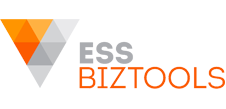PROBLEM SOLVING AND DECISION MAKING SUMMARY
PROBLEM SOLVING AND DECISION MAKING SUMMARY
Quick Links:-
Facilitator’s Guidance
Participant’s Handout
Leaders are continuously faced with the need to solve problems. Many are technical in nature and special problem solving tools are available for these purposes.
Leaders will also face problems that are more general in nature but are at the same time fundamentally different. While the use of special tools might not be appropriate or necessary for their solution, some form of problem solving methodology will enable leaders and their team members to make better decisions.
The purpose of the Session is to improve participants’ problem solving and decision making abilities which will enable them to develop better plans.
The matters covered are:
-
An example of how NOT to approach solving problems.
-
Brainstorming – seven guidelines for encouraging creative ideas.
-
The logic or appreciation method – a more structured method that is designed to systematically identify the key factors and involves using the left or logical side of the brain.
-
Combination of 1 and 2. This method utilises the benefits of the previous two by combining left brain logic with right brain creativity. By logic, identify the key factors/critical issues then brainstorm each one to identify how they might provide ideas and solutions that will help develop planning options.
Participants are reminded of the following points:
-
These are important skills required by leaders.
-
The more senior the greater the complexity.
-
It is a continuous challenge to maintain and develop these skills.
-
Study new methods and observe and learn from good decision makers.
-
Practice is essential and they should identify workplace issues that they and their teams can work on solving.
Throughout the Session participants are encouraged to involve themselves in the activities and discussions and relate the lessons learnt to their workplaces and other than work activities.
Download: Facilitator’s Guidance
Download: Participant’s Handout


























